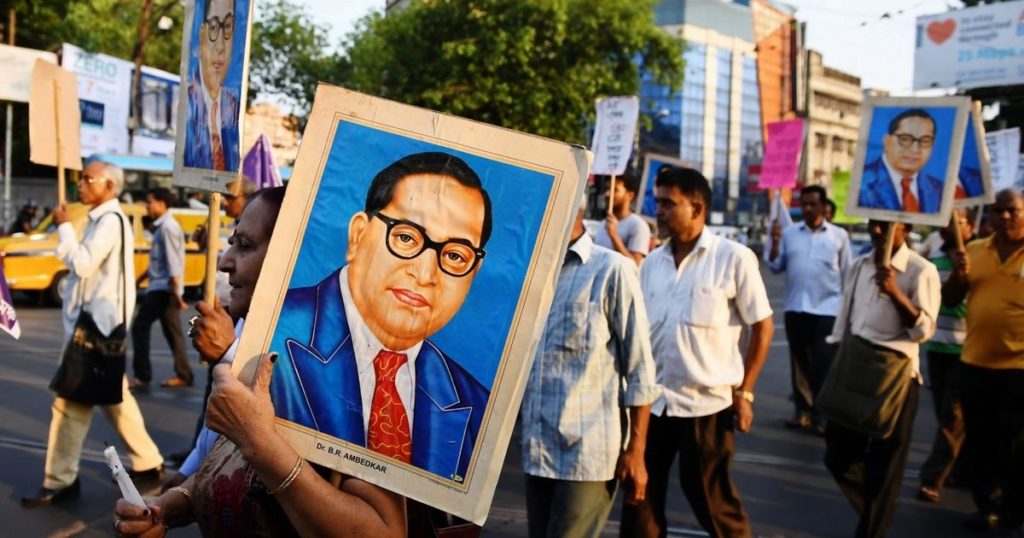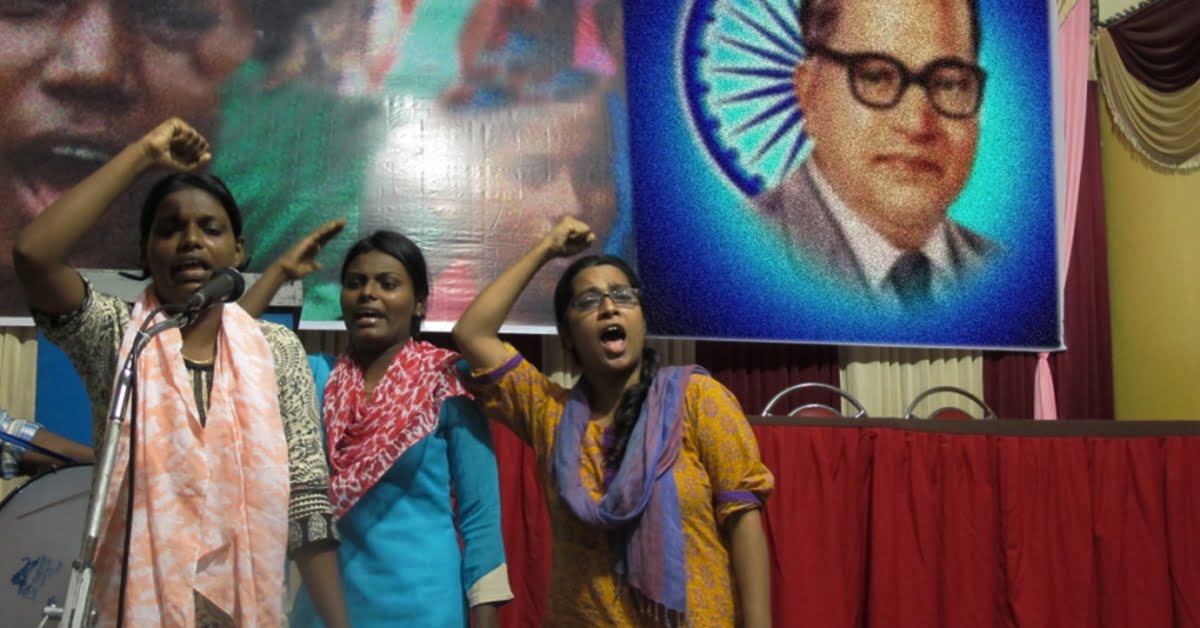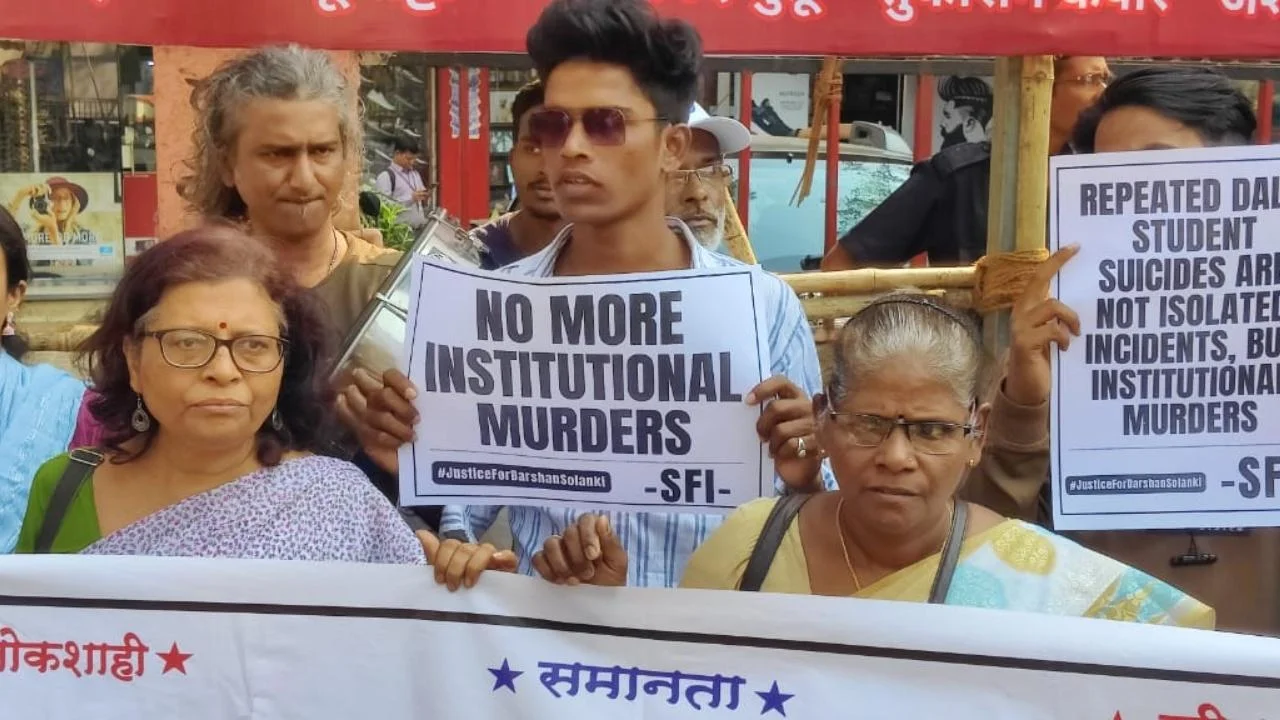When we talk about campuses, it is imperative that we talk about their inclusivity. The inclusion of Dalit and minority literature within college curriculums has been a topic of discussion for quite some time now. It is one of the major reasons that lead to shaping ideas of caste and casteism in young minds. Quite unfortunately, the representation of Dalit writers, especially females, has been significantly low in the pioneering varsity curriculums of India.
As recently as in 2019, a leading university in India received criticism for dropping Dalit texts from its English syllabus. The texts were “Sangat” and “Debt” written by the two famous Dalit authors Bama and Sukirtharini. As an afterthought, even Mahasweta Devi’s “Draupadi” was dropped because of majoritarian prejudices.
Right after the new syllabus was brought into force, several students, teachers, and political student bodies unitedly protested against the move.

Importance of teaching Dalit literature
It is high time that schools, as well as college curriculums, take cognisance of the importance of teaching Dalit literature to students from a young age. To ensure this education among students, literature and social sciences need to include more and more Dalit texts within curriculums.
An article by Sangharsh Telang says, “The Dalit curriculum remains unwelcome in higher learning and teaching institutions. The present policy debate pertaining to education in India indicates that Dalit pedagogy is antithetical to the overall national development and poses a threat to the ‘high order thinking’. The new model of an educational framework does not address the complex relationships between teachers and historically disadvantaged students. Nor does it provide an opening up of Dalit pedagogical practices across disciplines.”
We must question this pre-existing, pedagogical learning system, which despite all its claims to establish liberal education in multidisciplinary studies, fails to execute it effectively. Without the inclusion of the struggles and stories of, for, and by the minorities of the same learning system, we shall never see the light of inclusive education.
An issue in Dalit texts that constantly overlaps with caste is gender. Gender struggles have existed as an inclusionary factor with minority struggles. The dominant-caste-led literary curriculum within the school and college campuses has chiefly found it very hard to introduce Dalit writers, especially women
The initiation of Dalit literature is mainly an attempt to teach about every day “Dalit struggles” people go through. It is a measure to talk more about the discrimination, ostracisation, and brutality that Dalit people face personally on individual levels as well as on the whole as a community.
The nuances in the evolution of the Dalit community can be best introduced among students in schools and colleges by including these aspects in poems, stories, novels, and other sources of literature taught to them from a primary level.
Dalit literature engages in writing about Dalit experiences by Dalit writers themselves, thus allowing them an agency to voice their struggles. The most inspiring Dalit writer has undoubtedly been Dr. B R Ambedkar who has ushered in a body of texts directly addressing Dalit issues within India.
There have also been many other authors, poets, and critics in the consequent years who have offered students within Indian campuses many valuable lessons and unforgettable stories.
Also read: India Is Independent, But Do Dalits Live In A Free Country?

Studying works by Dalit women writers
An issue in Dalit texts that constantly overlaps with caste is gender. Gender struggles have existed as an inclusionary factor with minority struggles. The dominant-caste-led literary curriculum within the school and college campuses has chiefly found it very hard to introduce Dalit writers, especially women.
Dalit women writers, therefore, have had to struggle twice as hard to make their own space within the existing literary space as they not only face discrimination based on their caste but also their gender.
Despite being underrepresented in the male-dominated literary canon, some Dalit women have stood out as impactful writers. Meena Kandasamy, Shantabai Kamble, Bama Faustina Susairaj, and Kumud Pawade are just a few names among countless other Dalit women writers who have been known for their impeccable contributions to Dalit literature.
Their genres have ranged across countless poems, autobiographies, memoirs, books, and essays, that demand the same level of critical appreciation as any other form of literary work existing beyond the periphery.

Dalit literature should therefore be not just appreciated in terms of its literary merits but also for its social significance. This body of literature allows inclusivity of all social, cultural, and political aspects of human life. Hence, an overlap of many other issues falls under the issue of Dalit studies, Dalit rights, and Dalit literature. It is necessary to ensure the incorporation of them in school and college curriculums
The writing styles of Dalit women authors are both personal and political. They have experimented with reflective as well as reflexive thoughts of the ‘self’ in their works. The themes also go beyond preexisting ones and focus more on the “gradual increase of female voices and perspectives in Dalit writing”.
Authors like Urmila Pawar and Meenakshi Moon have even highlighted in their works how the Dalit movement gained momentum by focusing on Dalit-centric newspapers and literary societies. These efforts gave an insight into not just Dalit lives but also their documentation of female Dalit writers.
Apart from writing and publishing, the translation of Dalit texts has also been a major force in making this body of literature accessible and available. Maintaining the double consciousness, translating pieces of Dalit literature allows the authors to retain their voice while also feeling heard, and seen beyond the horizon.
The celebration of August in recent years as Women In Translation Month has seen many Dalit women writers receiving the exposure they have deserved for their works through translation. Some works include Father May Be An Elephant And Mother Only A Small Basket But…, by Gogu Shyamala, translated from Telugu, and The Weave Of My Life: A Dalit Woman’s Memoirs by Urmila Pawar, translated from Marathi by Maya Pandit which have been read and re-read over time.
Also read: The Historical Erasure Of India’s Groundbreaking Dalit Feminism

If not fully, it is essential that at least portions of these texts are introduced in varsity curriculums to instill an understanding of the struggles of Dalit communities in students.
Dalit literature should therefore be not just appreciated in terms of its literary merits but also for its social significance. This body of literature allows inclusivity of all social, cultural, and political aspects of human life. Hence, an overlap of many other issues falls under the issue of Dalit studies, Dalit rights, and Dalit literature. It is necessary to ensure the incorporation of them in school and college curriculums.
About the author(s)
Mrittika is a student of English. She is usually found expressing her love for art through words and music. At other times she is most likely traveling around the town trying new delicacies and imagining her life as a Greta Gerwig movie




